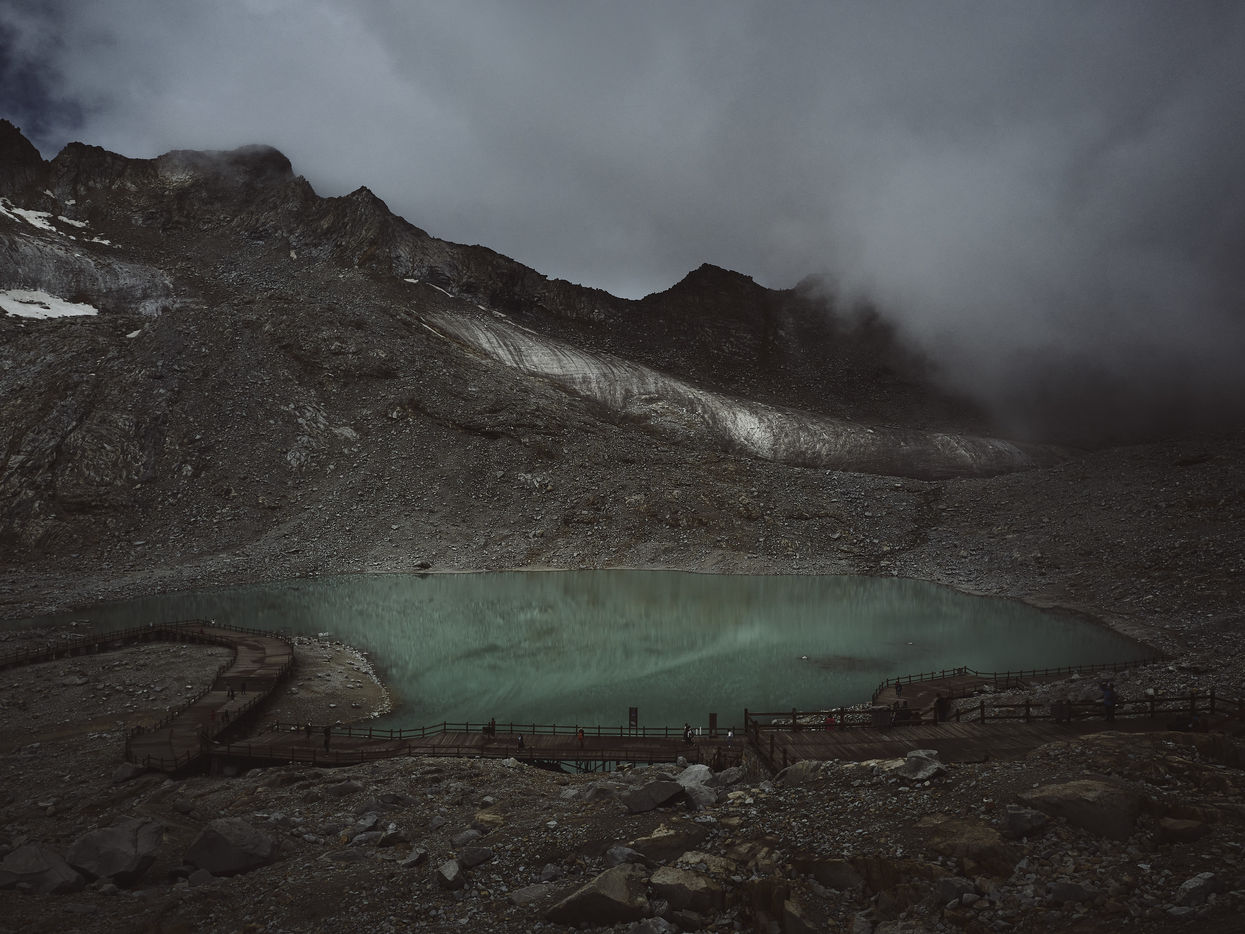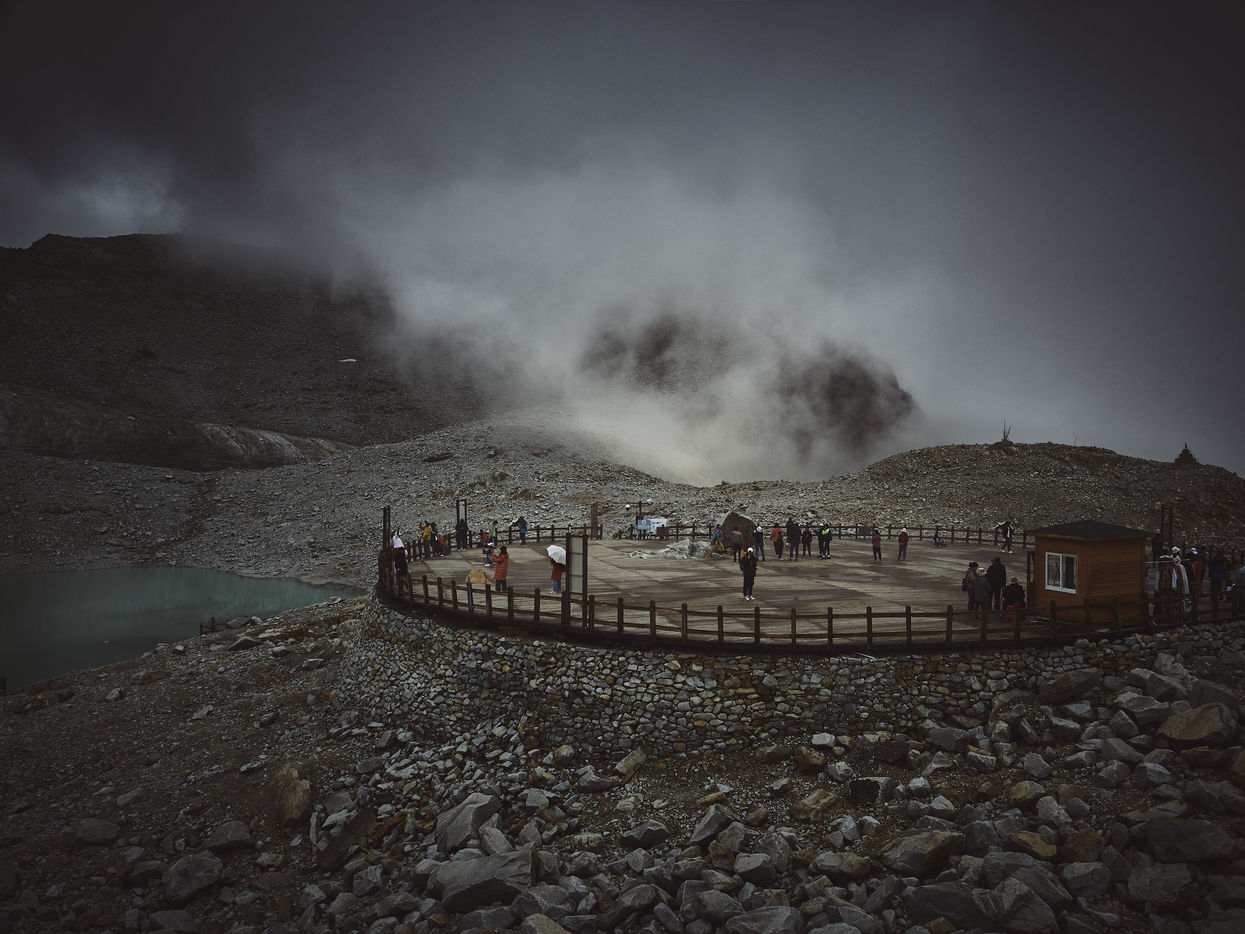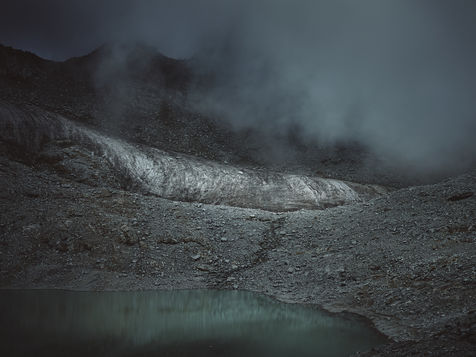Dagu, un glacier à l agonie
Situe aux debuts du plateau du Tibet au nord ouest du Sichuan, le glacier Dagu etait un des plus jeunes glaciers de Chine. Et nous pouvons quasiment en parler au passe, cet adolescent glaciaire étant en train de mourir sous l?effet du réchauffement climatique.
Tres connu en Chine grece au telephérique le plus haut du monde qui permet deatteindre en quelques minutes sa base a 4860 mètres, ce glacier, ou plutot ces glaciers car ils sont au nombre de 3, ne sont plus que l?ombre d?eux-mêmes.
Il y a quelques annees encore, la cime etait recouverte en toute saison de neige eternelle, et le lac a ses pieds etait gele. Mais dorenavant, l ete laisse decouvrir un paysage aride de pierres. Quant a la glace subsistante, elles est d?une teinte grisatre et meme noire par endroits.
En 1971 lors de premiers recencements des glaciers, le système Dagu en comptait 17 sur une superficie de 5,6km2. En 2007, 4 glaciers avaient disparu et leur superficie avait ete divisée par 2.
En 2008, lors de l?inauguration du telephérique il n?en restait plus que 11 et aujourd?hui seulement 3 officiellement mais 2 dans les faits.
En 2020 des scientifiques ont tente de les sauver en les recouvrant d?immenses baches de tissu thermique doublees d un materiau reflechissant afin de ralentir la fonte de la glace.
La fonte des glaciers sur le plateau Tibetain, appele aussi le 3eme pole, est un probleme crucial pour plusieurs milliards d?etres humains. C est en effet ici que prennent source le Yantse, le Fleuve Jaune, le Mekong et l Indus. L impact du rechauffement climatique y est plus severe que partout ailleurs sur la planete et les scientifique predisent que la temperature pourrait y augmenter de 4 degres au cours du 21eme siecle.
Dagu, a glacier in its death throes
Located at the beginning of the Tibetan plateau in the northwest of Sichuan, the Dagu glacier was one of the youngest glaciers in China. And we can almost talk about it in the past tense, this glacial teenager is dying under the effect of global warming.
Very famous in China thanks to the highest cable car in the world which allows to reach in a few minutes its base at 4860 meters, this glacier, or rather these glaciers because there are 3 of them, are now only the shadow of themselves.
Until a few years ago, the summit was covered with eternal snow in all seasons, and the lake at its feet, the now well-named Lake of Tears, was frozen. But from now on, the summer lets discover an arid landscape of stones. As for the remaining ice, it is of a grayish tint and even black in places.
In 1971, when the glaciers were first recorded, the Dagu system had 17 of them on an area of 5.6km2. In 2007, 4 glaciers had disappeared and their area had been divided by 2.
In 2008, when the cable car was inaugurated, there were only 11 left and today only 3 officially but only 2 in reallity.
In 2020, scientists tried to save them by covering them with huge tarpaulins of thermal fabric lined with a reflective material in order to slow down the melting of the ice.
The melting of glaciers on the Tibetan plateau, also called the 3rd pole, is a crucial problem for several billion human beings. This is where the Yantse, the Yellow River, the Mekong and the Indus rivers originate. The impact of global warming is more severe here than anywhere else on the planet and scientists predict that the temperature could rise by 4 degrees in the 21st century.
























